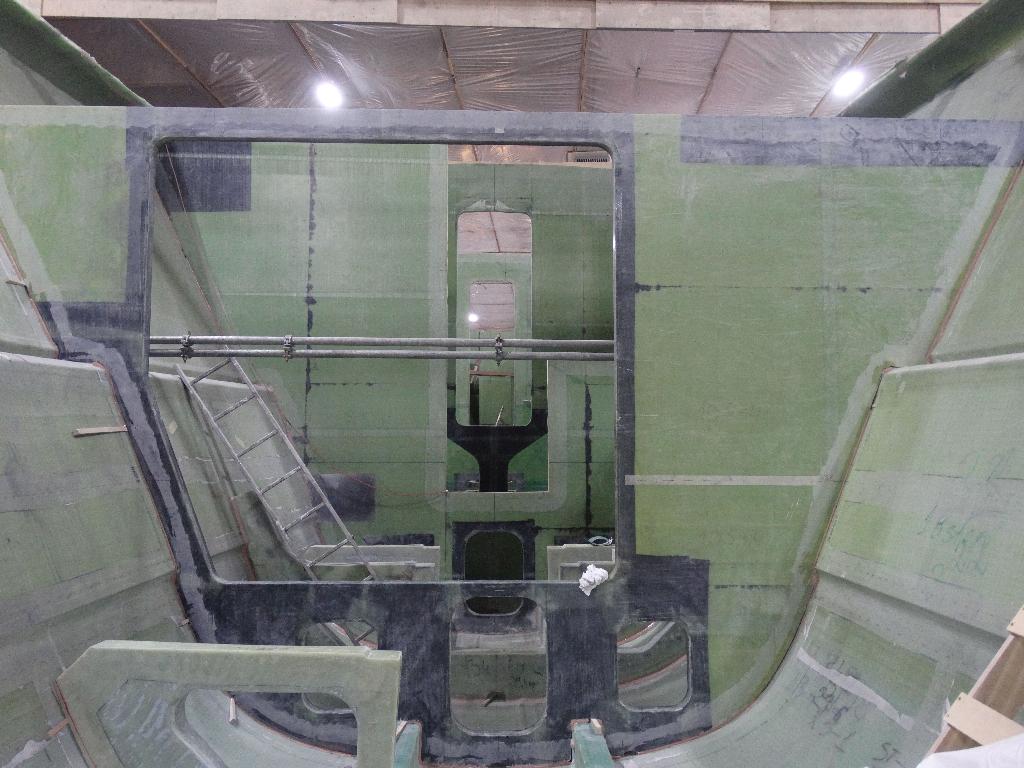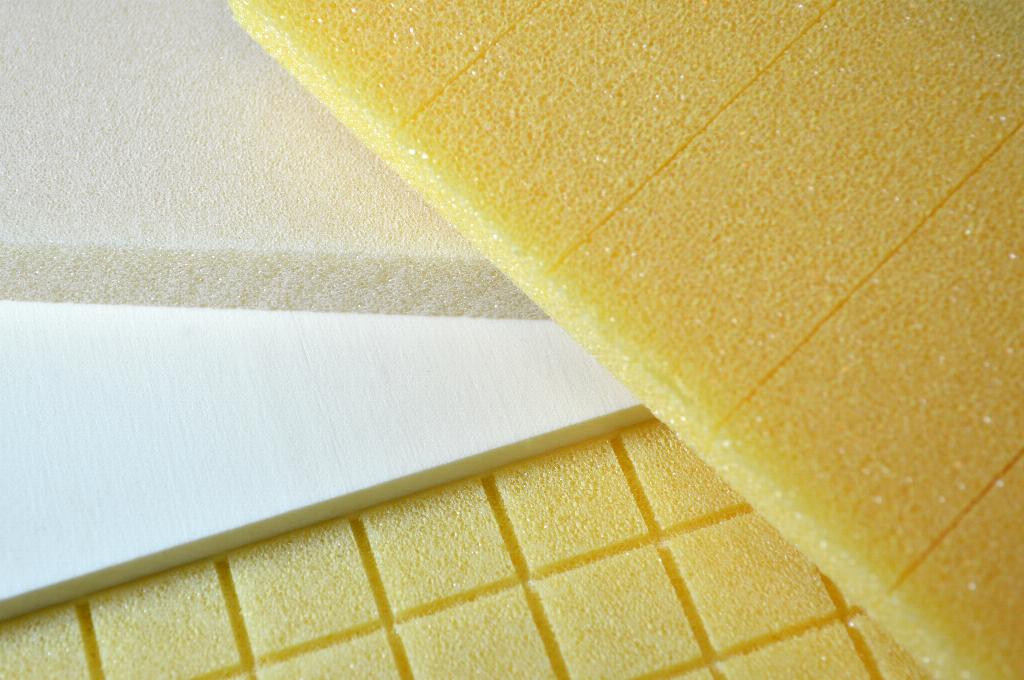Plain sailing with single shot moulding

Composites specialist, Gurit has helped a shipyard to make a huge yacht hull in a single-shot process. Lou Reade reports
When Latitude Yachts, a shipyard in Riga, Latvia, took on a contract to build two near-identical super-yachts it knew it would have to use innovative production methods in order to meet the punishing deadline.
The yachts – Galaxy, and Galaxy of Happiness – had to be built in just 36 months, for delivery to customers in the Middle East. The trimaran yachts would be 53m in length, and able to travel faster than 28 knots. At their launch last year, Latitude described the boats as ‘spaceships from Riga’.
To add to the challenge, Latitude was acting as a full provider, so would be doing all the construction itself. In a situation like this, it needed trustworthy technology partners – and it found one in Swiss composites specialist Gurit.
“It’s always important to have a close relationship with the customer,” begins Gurit’s regional sales manager and technical sales for Europe, Piet Heydorn. “We like to be involved in projects as early as possible – and it certainly helped in this case.”
This was Latitude’s first foray into super-yachts, and it used advanced composites technology to make the vessels. Not only that, it had decided to use a production method that had not been tried before for such enormous boats – Gurit’s ‘one-shot’ Sprint technology.
Prepreg sprints ahead
Sprint, a thermal infusion prepreg technology, improves on the traditional multi-stage prepreg process in that everything is done in a single step. Ordinarily, processes such as vacuum debulking and curing must be done in sequence. With Sprint, there is no need for the intermediate steps – and the laid-up part is cured in ‘one shot’.
“Sprint brings repeatability to the whole process – and that’s difficult to achieve in composites production,” states Heydorn. He adds that achieving everything in one shot is also faster and more energy-efficient – as well as leading to a lighter final structure.
The proof of how Sprint brings repeatability to the process was seen in the final composite structure weights of the two yachts – which were within 500kg of each other. This may sound like a lot – but for a weight of 56 tonnes, it equates to a variation of less than 0.9%.
Using Sprint to make a 53m yacht was a huge achievement in itself – but there were other innovative aspects of the project.

Built prototype surprise
One surprising factor was the way in which the boat was prototyped. Ordinarily, prototypes are carefully designed scaled-down models of the final product. Here, Latitude opted to build a complete 40ft yacht in order to test out its planned production method.
Part of the reasoning was that it had an existing mould for such a vessel, from a previous project. All the design work for this boat was already done, so the process involved using Sprint technology – and selected materials – in order to ‘prove’ the concept.
As well as trialling the technology and materials, the prototyping also allowed Latitude to train a core team of staff in the production methods. Once this was complete, the learning was transferred to a larger team, for final construction of the two super-yachts. The process of building this ‘prototype’ took around three weeks – and cost around €100,000 in labour and materials. “Once it was done, Latitude had enough detailed knowledge to build the super-yachts,” Heydorn notes.
Another innovative element was the mould used to make the hull. Because the part was so large, it would be impossible to lift out in traditional fashion. So, the mould was designed to be used just once. “After the part was finished, the mould was ripped off the sides,” he says.
This meant that several competing factors had to be considered. In the first place, the mould had to be robust enough to survive a long curing cycle at up to 95°C – and retain full vacuum integrity. “The worst thing would be to lose vacuum,” he says.
At the same, it had to be more economical than a re-usable mould. Though Heydorn will not reveal exact details of its construction, he says the key was to identify a material that could make a thin – yet rigid – mould that was strong enough to withstand the challenging production conditions.

Making material gains
While Sprint technology was crucial to the process, so were some of the materials chosen. In all, around 50 Gurit materials – ranging from prepregs to adhesives – were used in the construction. However, Heydorn cites a few critical grades that were crucial to its success.
The two main resin systems – processed using Sprint – were Gurit’s WT93 and ST94. WT93 is usually glass-reinforced, and was used for large, heavy sections – such as the bottom of the boat. ST94, meanwhile, is normally reinforced with carbon fibre and is used for parts that need good mechanical properties, such as sandwich areas.
Heydorn also cites surface films, which help to protect the surface of the laminate from damage – and can reduce the amount of surface preparation needed, prior to painting. Another critical material was Corecell M – a special grade of core material for marine applications that exhibits high mechanical properties, especially toughness and ductility.
Corecell is based on styrene acrylonitrile (SAN) chemistry, which gives it advantages over PVC-based core materials, says Heydorn. An example of this is that knife core cutting – which helps to improve flexibility – can be done much more precisely. Lines are knife-cut into the surface of the sheet, helping it to flex when in use. However, these cuts must be infused with resin, in order to maintain strength. Because the cuts in Corecell M are much thinner and shallower, it means that less resin is needed to fill them.
“This can help you save around half a tonne of weight on a ship of this size,” he says.
Sprint is a well-established process that is used extensively in the marine industry, and this is the first time it has been used to make such an enormous structure using a single-shot process. However, it’s unlikely to be the last – as Latitude has already announced plans to build two similar boats in the future.
“Being able to make it in a single shot is a real step forward,” Heydorn concludes.






